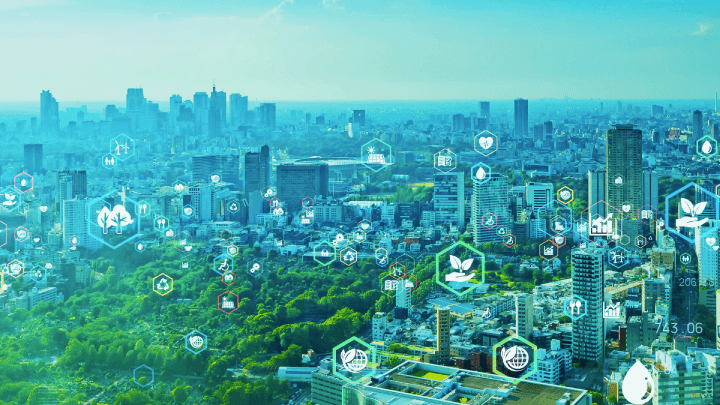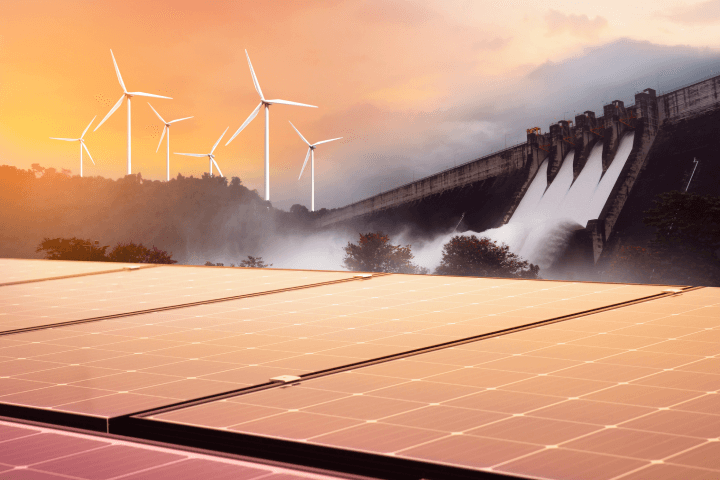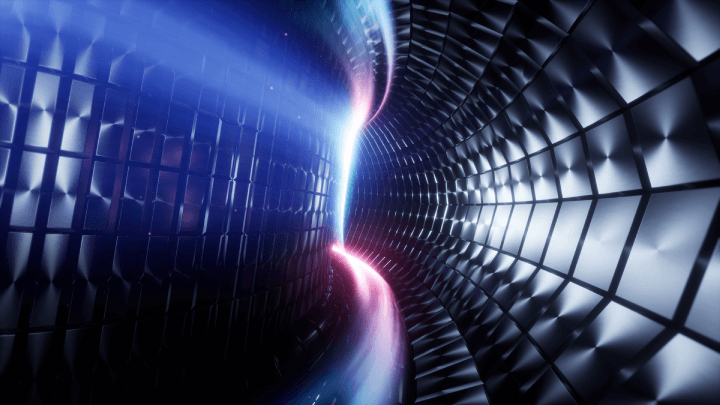The Future of Green Energy: Can We Sustain the Transition?
Environment | 10-03-2022 | By Robin Mitchell
Green energy has been touted to be the future of energy generation in a world concerned with climate change. Still, rising energy costs and poor planning is creating a perfect storm for an energy collapse. What did green technology promise, why has the move to green energy been a disaster, and can we sustain the move to green energy?

For those unfamiliar with the term, green technology refers to the use of technology and science to create products and services that are environmentally friendly. Green technology is at the heart of the transition to green energy, as it includes technologies like solar panels, wind turbines, and electric vehicles that can help to reduce our dependence on fossil fuels.
Green hydrogen, a renewable energy source, has the potential to play a significant role in the future of energy generation. According to the International Renewable Energy Agency (IRENA), green hydrogen could meet 24% of our energy needs by 2050, providing a sustainable solution to our energy problems.1
What did green energy promise?
The 20th century saw unbelievable technological advancements, including the development of vaccines, the invention of the transistor, the moon landing, and the birth of the Internet age. However, this rapid development of technology also resulted in greater demands for energy production, which led to the mass construction of power plants whose energy sources mostly came from fossil fuels.
Coal and oil are incredibly abundant, have excellent energy densities, and are easy to obtain. The power stations built around them are easy to construct, their decommissioning does not involve the disposal of hazardous waste, and every country in the world can afford them. But such power stations are also extremely harmful to the climate and environment, not just with the CO2 they release, but the cancer-causing particulates creating smog, acid rain, and release of heavy metals.
Renewable sources of energy such as solar, wind, hydroelectric, and geothermal were seen as the ideal energy of the future that could remove our dependency on fossil fuels while also helping to revert environmental damage. The lack of CO2 production was touted as the solution to reverse climate change. The lack of mining operations would prevent the displacement of indigenous peoples and remove the damage done to habitats. The fact that renewable energy sources are incredibly abundant would meet all of our energy needs.
However, the transition to renewable energy is not without its challenges. For instance, renewable energy sources such as solar and wind are intermittent, meaning they only produce energy when the sun is shining or the wind is blowing. This can lead to fluctuations in energy supply, which can be problematic for the power grid.5
In the United States, renewable energy accounted for about 13% of total energy consumption in 2022, with the electric power sector accounting for about 61% of total U.S. renewable energy consumption.2
Why has the move to green energy been a disaster?
There is no doubt that green energy suppliers have their challenges, and this has been acknowledged even by those who advocate its sole use. One of these is that not every site is suitable for renewable energy gathering; some places have little wind, some places have little sunlight, and only a few places in the world have accessible geothermal activity.
Challenges of Green Energy
However, green electricity faces new challenges that are now threatening everyday life. The biggest by far is the poor switch over to green energy sources without having the proper infrastructure in place. A good example is Germany which has entirely moved away from nuclear (a green source of energy) and jumped feet first into solar. However, it quickly became apparent that the energy output from solar renewable energy is unreliable, and the nation has now built coal plants in an age where most places are closing them down (there are 30 operational in Germany compared to only 2 in the UK). So ironically, the attempted move to solar has actually resulted in more coal being burned.

One of the key challenges in transitioning to green energy is the need for a reliable and stable energy source. Nuclear power has been shown to be a highly reliable source of energy, with nuclear power plants designed to operate for longer stretches before refueling, typically every 1.5 or 2 years. This makes nuclear power a potential complement to renewable energy sources, providing a stable supply of energy to balance the intermittency of sources like solar and wind.5
Infrastructure and Reliability Issues
Nuclear power plants are designed to operate for longer periods before refueling, typically every 1.5 to 2 years. This, combined with the fact that nuclear energy does not depend on weather conditions like solar or wind energy, makes it a highly reliable source of energy. In fact, nuclear energy has the highest capacity factor of any energy source, meaning it is capable of producing power at maximum capacity for a greater percentage of the time compared to other energy sources.5
Germany's move away from nuclear energy, a green source, towards solar energy has led to the construction of more coal plants due to the unreliability of solar energy output. This highlights the importance of having a reliable energy source, such as nuclear power, which has been shown to be the most reliable energy source.3
The Role of Nuclear Power
Another major problem faced with the move towards renewable energy is the idea that fossil fuel extraction should be stopped. This has led to nations having some fossil fuel plants in operation, but their fuels are obtained from other countries. Any fluctuation in renewable green power output drastically affects energy prices, as does the state of international affairs.
The Russia-Ukraine conflict perfectly demonstrates this. As many countries worldwide depend on Russian gas and oil, the invasion of Ukraine by Russia saw mass sanctions, including the stopping of oil and gas. The result is that the price of fossil fuels shoots up, and considering that the war has happened during the winter when gas demand is at its highest, energy prices have dramatically risen.
These challenges highlight the importance of a diversified energy mix, which can help to ensure a stable and reliable supply of energy. For instance, nuclear power can serve as a reliable base load power source, complementing the variable output from renewable energy sources. Furthermore, advancements in energy storage technologies could potentially help to mitigate the intermittency of renewable energy sources, further enhancing the sustainability of the energy system.5
According to the U.S. Department of Energy, nuclear power is not only a reliable source of energy, but it also plays a crucial role in reducing greenhouse gas emissions. Nuclear power plants produce no carbon dioxide or air pollutants during operation, and over their entire lifecycle, they result in comparable emissions to renewable forms of energy such as wind and solar.5
 Image of the ITER Tokamak, an International Fusion reactor, showcasing the Blanket and plasma components.
Image of the ITER Tokamak, an International Fusion reactor, showcasing the Blanket and plasma components.
Case Study: Denmark's Green Energy Transition
Denmark serves as an excellent example of a country that has successfully transitioned to green energy. The country has been a global leader in the energy transition, with a commitment to becoming carbon-neutral by 2050. Denmark has already achieved its 2020 goal for solar energy seven years in advance, demonstrating the country's commitment and effectiveness in implementing green energy solutions.67
Denmark's success in green energy transition can be attributed to several factors. First, the country has a robust infrastructure for renewable energy, including wind farms and solar panels. Second, Denmark has a strong commitment to research and development in green technology, which has led to innovations in energy efficiency and renewable energy sources. Finally, the country has implemented effective policies and incentives to encourage the use of renewable energy.6
Despite these successes, Denmark's transition to green energy has not been without challenges. The country has had to deal with issues such as the intermittency of renewable energy sources and the need for energy storage solutions. However, Denmark's commitment to overcoming these challenges and its continued investment in green technology demonstrate that the transition to green energy can be both feasible and beneficial.6
As of 2021, Denmark has set an ambitious goal to achieve 100% renewable electricity by 2030. This goal, if achieved, will further solidify Denmark's position as a global leader in the green energy transition and serve as an inspiration for other countries considering a similar transition.8
Denmark's experience with green energy transition provides valuable lessons for other countries. It shows that while the transition to green energy may be challenging, it is also achievable with the right combination of technology, policy, and commitment.

Can the move to green energy be sustained?
Energy storage companies worldwide are working hard to develop ideal methods for storing energy from renewable energy sources, whether it is the use of pumped hydro, stacking concrete blocks with cranes, using large lithium-ion batteries, or using molten salt. While this will help solve the challenges of renewable energy intermittency, it will do little to help solve the social-political problems associated with the current implementation of renewable energy.
If countries truly switch over to renewable energy, it must be done so full-heartedly without the unusual half-half measure of some renewable and some fossil. A lack of renewable energy combined with the dependency on foreign nations leaves us open to wild energy price fluctuations and possibly even the need to reopen coal plants, as Germany is doing.
But what is very unusual is the widespread resistance against nuclear energy when considering that it is one of the safest forms of energy regarding lives lost (ironically, solar is one of the highest as installers do fall off roofs). There are concerns regarding the spent nuclear waste, but if climate change (and the environment in general) really are under serious threat, then going nuclear makes the most sense.
While there are legitimate concerns about the disposal of nuclear waste, advancements in technology and regulatory practices are helping to mitigate these risks. For example, most of the nuclear waste produced by power plants is low-level waste, which includes items like protective clothing and equipment that have been contaminated with small amounts of radioactive dust. This waste can be safely disposed of in near-surface disposal facilities. High-level waste, such as used nuclear fuel, is carefully stored and monitored. Research is also underway to develop more sustainable and safe methods for disposing of high-level waste.5
Nuclear power plants are designed to operate for longer stretches before refueling, typically every 1.5 or 2 years, making them a reliable source of energy. In fact, nuclear energy has been supplying about a fifth of America's power each year since 1990.4
Of course, there is one other alternative to becoming 100% renewable; becoming 100% fossil fuel. As strange as it may seem, some believe the best thing to do is to go all chips in on fossil fuels and focus on accelerating technology with extremely cheap fuel prices, widespread mass production, and consumerism to the max. The idea behind this is that such a society may be able to crack exotic sources of energy (such as fusion) faster, and this would, in turn, lead to more rapid decarbonisation of everyday life.
References
- "Green hydrogen could meet 24% of world’s energy needs by 2050." International Renewable Energy Agency. Link
- "Renewable Energy Explained." U.S. Energy Information Administration. Link
- "Nuclear Power in Germany." World Nuclear Association. Link
- "Energy storage - Packing some power." The Economist. Link
- "The Role of Firm Low-Carbon Electricity Resources in Deep Decarbonization of Power Generation." Joule. Link
- "How Denmark has become a global leader in the energy transition." International Renewable Energy Agency. Link
- "Denmark reaches 2020 goal for solar energy 7 years in advance." Electropages. Link
- "Denmark eyes 100% renewable electricity by 2030." Reuters. Link

